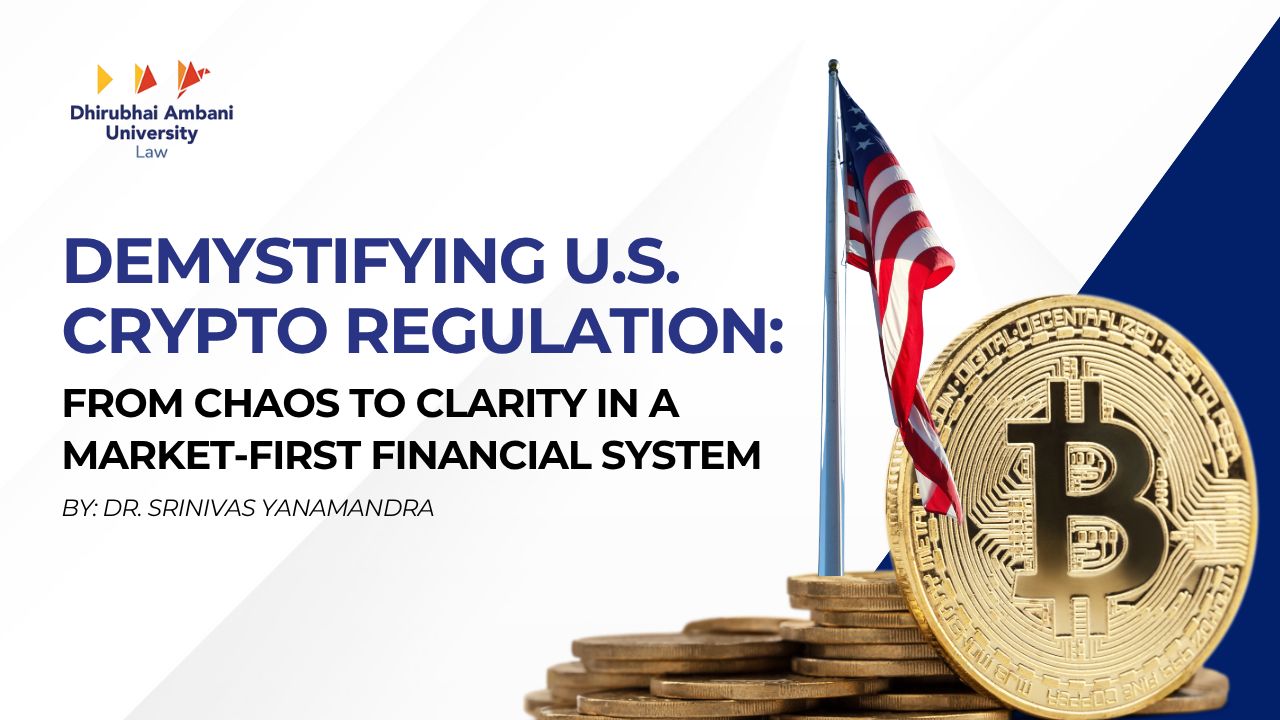
For much of the last decade, digital asset innovators in the United States have operated in a legal and regulatory vacuum. The foundational issue has been the absence of a clear regulatory framework that defines what digital assets are, which regulator has authority over them, and how market participants can comply. This lack of definitional clarity, combined with jurisdictional uncertainty between agencies like the Securities and Exchange Commission (SEC) and the Commodity Futures Trading Commission (CFTC), has created a chilling effect on innovation, prompting projects to either delay launch or move offshore. In the case of stablecoins – privately issued digital tokens pegged to fiat currencies – the absence of clear operational rules further added to the uncertainty.
The year 2025 marks a turning point. Through a series of complementary legislative acts, the United States has begun to establish a comprehensive, market-driven regulatory framework for crypto assets, digital commodities, and stablecoins. These efforts aim not only to mitigate risk and protect consumers, but also to position the United States as a leader in financial innovation, without resorting to a central bank-issued digital currency.
The first major step was the passage of the Financial Innovation and Technology for the 21st Century Act, commonly referred to as the FIT21 Act. This legislation laid the conceptual foundation for digital asset regulation by introducing a clear taxonomy of digital assets and distinguishing between two broad categories: digital assets and digital commodities. Digital assets are broadly defined to include cryptographic tokens issued or sold as part of an investment contract or that confer rights to profits, voting, or control. Digital commodities, on the other hand, are tokens that do not represent such rights and function more like currencies or utilities within a decentralized ecosystem.
Crucially, the FIT21 Act introduced the principle of decentralization as the test for determining regulatory jurisdiction. If a digital asset is sufficiently decentralized – meaning no centralized entity has unilateral control over its development, issuance, or governance – it is treated as a digital commodity and falls under the jurisdiction of the CFTC. If, however, the asset remains under the control of a central entity or its initial offering is structured as an investment contract, it is classified as a security, subject to SEC oversight. This approach recognizes the dynamic nature of blockchain-based projects, many of which evolve from centralized beginnings into decentralized networks. Accordingly, the law provides a provisional registration pathway for token issuers to transition from SEC to CFTC oversight as their projects become decentralized over time.
Building on the FIT21 Act, the Digital Asset Market Clarity Act – commonly referred to as the Clarity Act – further delineates the roles of the SEC and CFTC in regulating digital assets. It formalizes the decentralization test and provides procedural clarity on how issuers can seek jurisdictional determinations (as formulated in FIT21 Act). This act addresses the long-standing regulatory turf war and gives innovators a well-defined roadmap for determining their compliance obligations.
While the Clarity Act addresses the jurisdictional question for digital assets more broadly, the GENIUS Act (Guarding Innovation and National Interest by Uplifting Stablecoins) focuses specifically on the stablecoin sector. Stablecoins occupy a unique position within the digital asset ecosystem. While they are technically a type of digital asset – often existing on the same blockchain infrastructure – they differ fundamentally in purpose and risk profile. Unlike investment tokens or
commodities that derive value from market dynamics or decentralized network activity, stablecoins are pegged to fiat currencies and are designed to function as a store of value and medium of exchange. Their operational stability depends less on decentralization and more on reserve management, redemption mechanisms, and trust in the issuer.
Recognizing this distinction, the GENIUS Act creates a framework that allows both banks and non-bank institutions to issue stablecoins under regulated conditions. It emphasizes transparency, reserve backing, and disclosure requirements, while allowing flexibility in innovation models. Notably, the act does not impose an outright ban on algorithmic stablecoins, though it expects issuers to demonstrate adequate risk management and consumer protection protocols.
In contrast, the Clarity for Payment Stablecoins Act addresses the operational side of stablecoin issuance. It sets out licensing requirements, redemption guarantees, reserve composition, and disclosure rules. It introduces a two-year moratorium on algorithmic stablecoins, pending further study, and restricts their issuance regardless of whether the issuer is a bank or non-bank. This act ensures that payment stablecoins operate under a consistent regulatory standard and that
consumers have enforceable rights to redeem tokens for fiat value. Together, the GENIUS Act and the Clarity for Payment Stablecoins Act create a coherent structure for the stablecoin ecosystem, balancing innovation incentives with regulatory safeguards.
Taken collectively, these acts lay the groundwork for a digital asset market in which private innovation can flourish under a structured legal regime. Definitions have been clarified. Jurisdictions have been assigned. Operational norms are being enforced. With this regulatory architecture now in place, the United States has effectively signaled that digital currency innovation should be led by the market, not the government.
The Anti-CBDC Act bars the Federal Reserve from issuing a retail digital currency, reflecting concerns over surveillance and centralized control. This legislation underscores the U.S. commitment to a market-led approach to digital money, where private actors—not the state—drive innovation within a regulated framework. In contrast to state-run digital currencies in China, India, and the EU, the U.S. model focuses on enabling private stablecoins while the government acts as referee, not player. By formally withdrawing the central bank from the direct issuance of digital currencies, the United States reinforces its commitment to a market-first approach.
As the dust settles on years of confusion and legal wrangling, the United States now offers a viable, rules-based path for digital asset development. The message from Washington is clear: the field is open, the referees are in place, and the game can finally begin.
